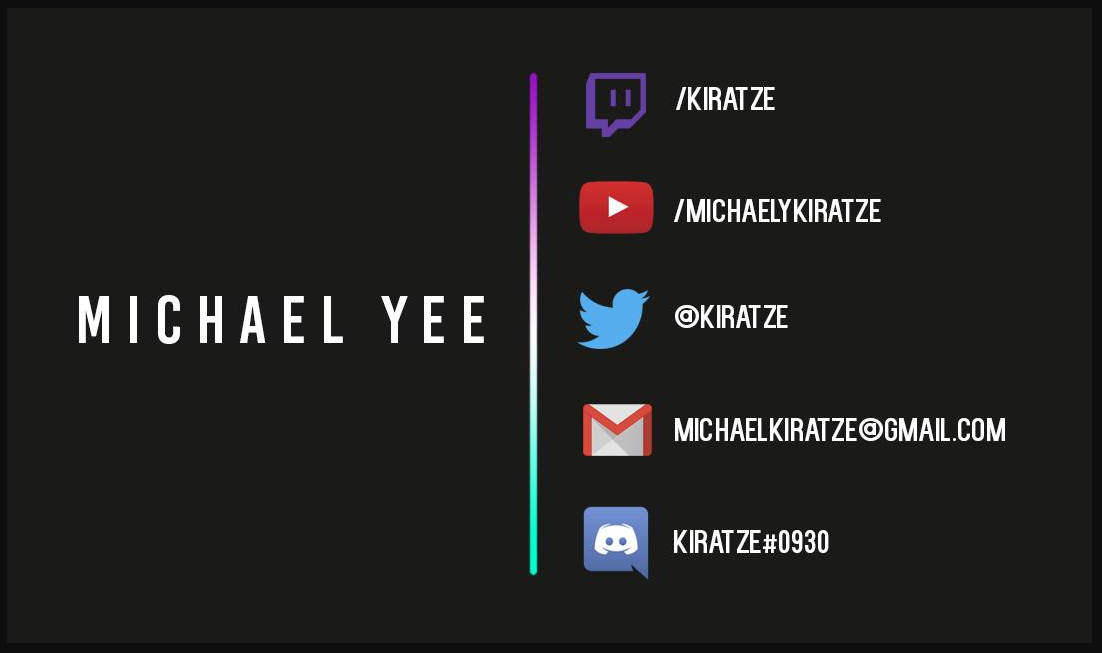A Broadcaster’s Guide to Business Cards

Business cards are an important aspect of being a creator. They’re often overlooked, despite establishing first impressions of your brand and getting your name out there. Sometimes it’s easy to overlook the offline aspects when you’re dealing with an online venture. Our guide covers why business cards are important, what to do (or not do) when creating them, and how to utilize them.
Why Business Cards are Important for Creators
With building an online community, we often forget to consider the offline aspects that go along with it. Whether you’re attending a local meetup or going to a major convention, preparation is important. Business cards are often the first impression people have of your stream and brand when meeting you face-to-face. They show preparation while highlighting your professionalism, personality, and contact information.
The Do’s
- Keep it simple – Too much information, lots of images, or a busy design can be distracting and look unprofessional. Make sure all of your fonts are legible, this includes their size.

- Include key information – Things such as your channel, main social media handles, business email, and what you do are important. Haven’t updated your Pinterest account in 3 years? Probably don’t need to add that one. While it’s fine to also include your real name, make sure you do your research ahead of time on what information is available publicly if privacy is a concern.

- Use a standard card size – While there are exceptions to this, most often non-standard cards get lost, misplaced, or thrown out.
- Include your face – This helps people connect the information on the card to the person they spoke with. The next time they see you, they’ll have an easier time remembering who you are and what you do.
- Utilize negative space and a matte finish – This is a key aspect that’s often overlooked. Having space on a card allows you (or the person you’ve handed it to) to write on it. After exchanging cards, people often write on it where they met them or a key thing they discussed, which can be useful in remembering who’s who at busy events. This also allows for space to write down extra information that you might not want to be printed on the card for everyone to have, such as your cell number. None of that matters, however, if you’ve got a super glossy card that can’t hold ink.
- Design them with you and your brand in mind – While your business card should be professional, it doesn’t have to look like you work a corporate 9-to-5. A good design will capture your personality and make people interested in wanting to connect with you. A memorable card is also one that is less likely to be thrown away. Utilize your branding to make your card stand out.
The Don’ts
- Don’t be cheap – This isn’t to say business cards need to be expensive, however, you don’t exactly want to design them in Microsoft Paint and print them out at home. There are a number of cost-effective sites where you can order cards online, such as Moo and VistaPrint. If designing isn’t your strong-suit, pay someone to design them for you. This can also be inexpensive using a service such as Fiverr and has the added benefit of saving you time. Don’t forget, you can also write it off as a business expense!
- Avoid personal information – This includes things like your mailing address or your personal phone number. You want people to be able to contact you, not find out exactly where you live.
- Don’t use outdated cards – Maybe you changed your channel name, updated your logo, or recently took on a new role. Make sure your cards are updated with relevant information. Although it may feel like a waste to throw out your old cards, it’s definitely the best thing to do.
While this list isn’t exhaustive, they are key points you should consider before creating your business cards.
How to Use Them
While you might think handing out business cards is self-explanatory, there are a number of cringe-worthy approaches you’ll want to avoid. Don’t hand them out like that dude passing out flyers you just walked past while avoiding eye contact. Don’t leave them lying around various places, hoping someone will miraculously pick one up and check out your channel. That’s not smart networking; that’s littering.
Business cards allow for interactions that often get missed when exchanging contact information digitally. A handshake (or fist-bump if you’re avoiding that Con Plague), eye-contact, introductions, and genuine conversation should all happen prior to exchanging business cards. There’s another key point in that sentence – exchange. Take a genuine interest in the other person and what they do. Ask for their card if you want to keep in touch or follow-up on a conversation.
Card photos used with permission of the owners.







